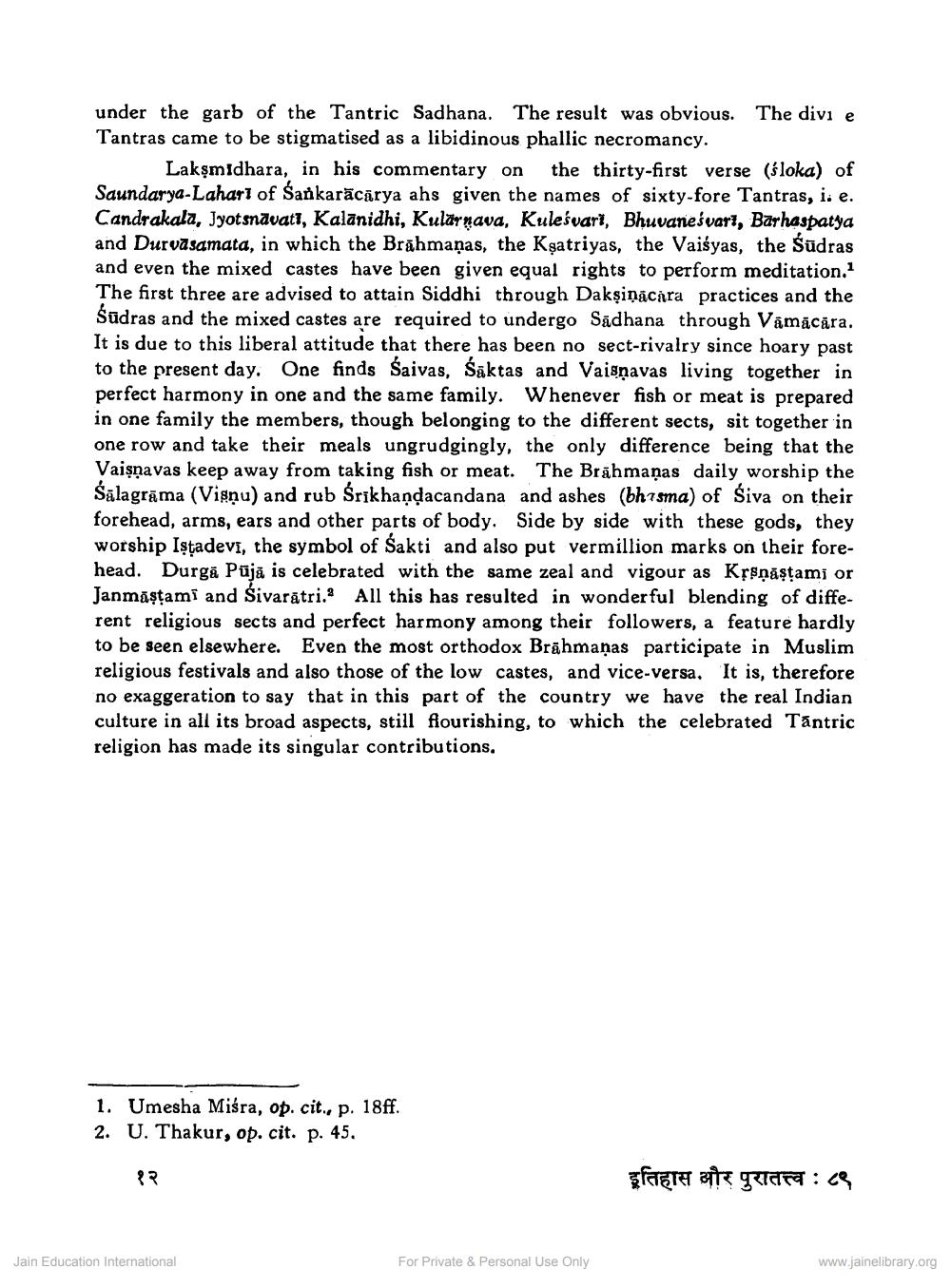________________
under the garb of the Tantric Sadhana. The result was obvious. The divi e Tantras came to be stigmatised as a libidinous phallic necromancy.
Laksmidhara, in his commentary on the thirty-first verse (loka) of Saundarya-Lahart of Sankaracarya ahs given the names of sixty-fore Tantras, i. e. Candrakala, Jyotsnavat, Kalanidhi, Kularṇava, Kulesvart, Bhuvanelvart, Barhaspatya and Durvasamata, in which the Brahmanas, the Ksatriyas, the Vaisyas, the Śūdras and even the mixed castes have been given equal rights to perform meditation.1 The first three are advised to attain Siddhi through Dakṣinacara practices and the Sūdras and the mixed castes are required to undergo Sadhana through Vamacara. It is due to this liberal attitude that there has been no sect-rivalry since hoary past to the present day. One finds Saivas, Šaktas and Vaisnavas living together in perfect harmony in one and the same family. Whenever fish or meat is prepared in one family the members, though belonging to the different sects, sit together in one row and take their meals ungrudgingly, the only difference being that the Vaisnavas keep away from taking fish or meat. The Brahmanas daily worship the Šalagrama (Visņu) and rub Śrikhandacandana and ashes (bhasma) of Śiva on their forehead, arms, ears and other parts of body. Side by side with these gods, they worship Istadevi, the symbol of Sakti and also put vermillion marks on their forehead. Durga Puja is celebrated with the same zeal and vigour as Kṛṣṇāṣṭami or Janmaṣṭami and Sivaratri. All this has resulted in wonderful blending of different religious sects and perfect harmony among their followers, a feature hardly to be seen elsewhere. Even the most orthodox Brahmaņas participate in Muslim religious festivals and also those of the low castes, and vice-versa. It is, therefore no exaggeration to say that in this part of the country we have the real Indian culture in all its broad aspects, still flourishing, to which the celebrated Tantric religion has made its singular contributions.
1. Umesha Miśra, op. cit., p. 18ff. 2. U. Thakur, op. cit. p. 45.
१२
Jain Education International
For Private & Personal Use Only
इतिहास और पुरातत्त्व : ८९
www.jainelibrary.org




